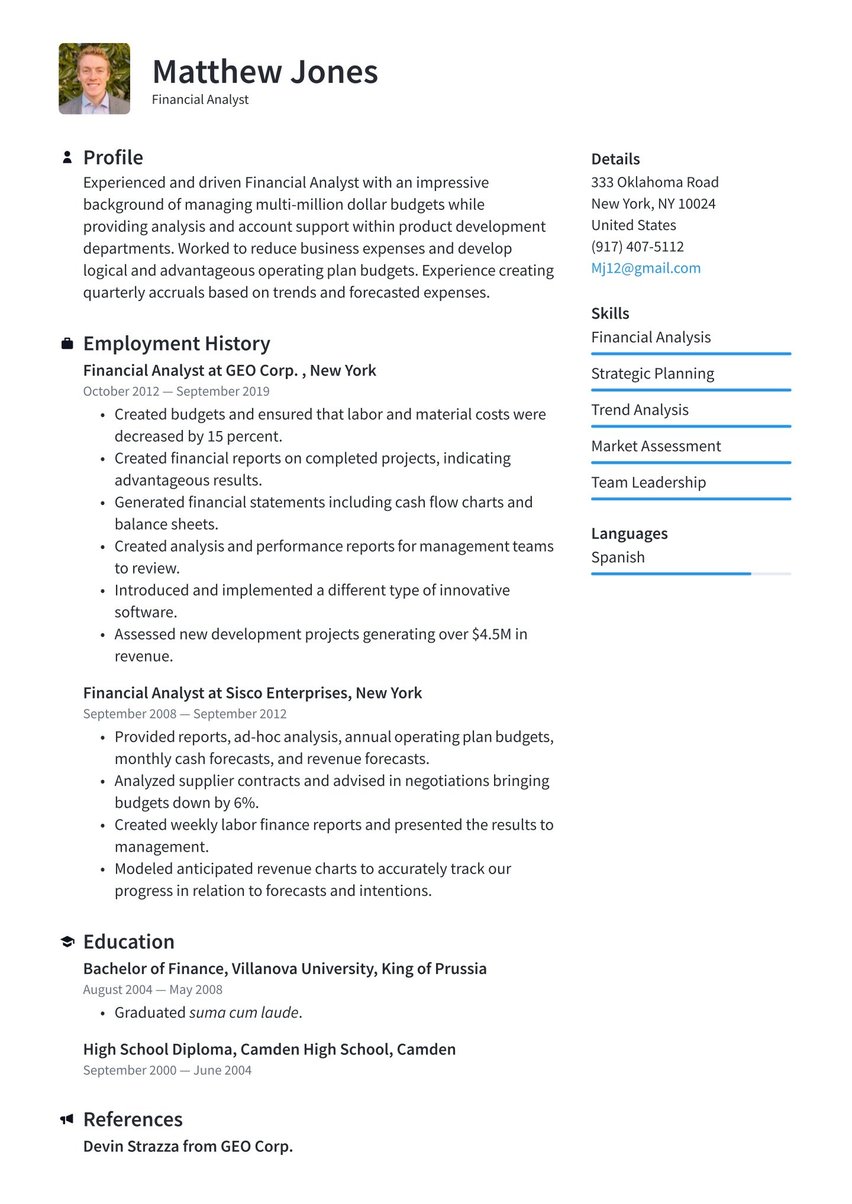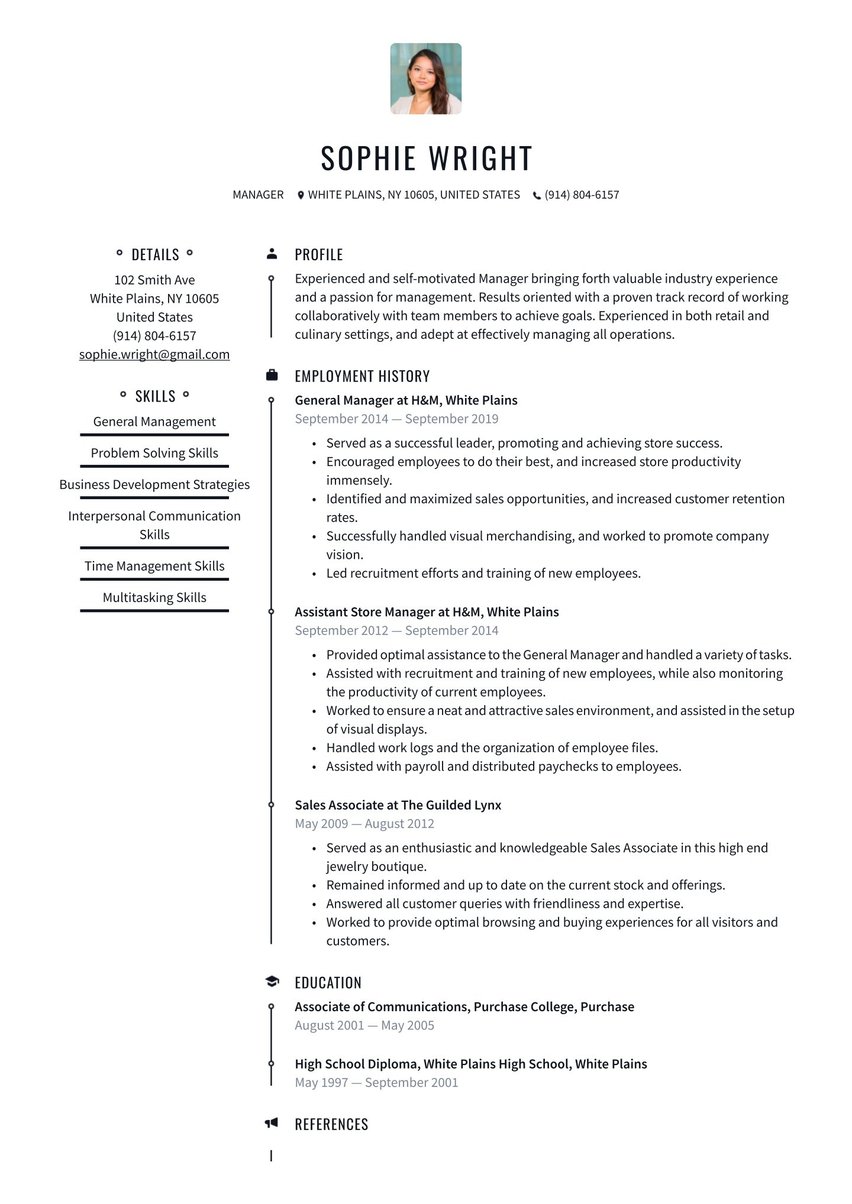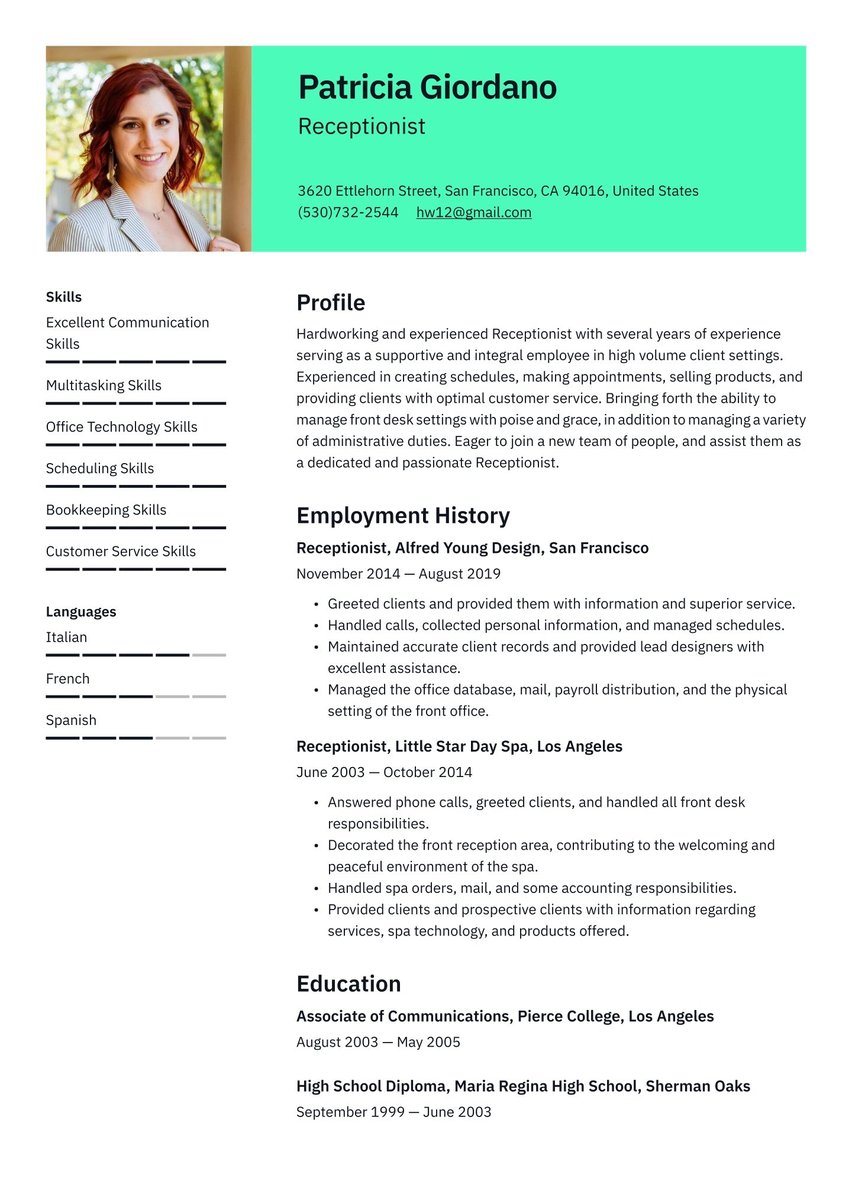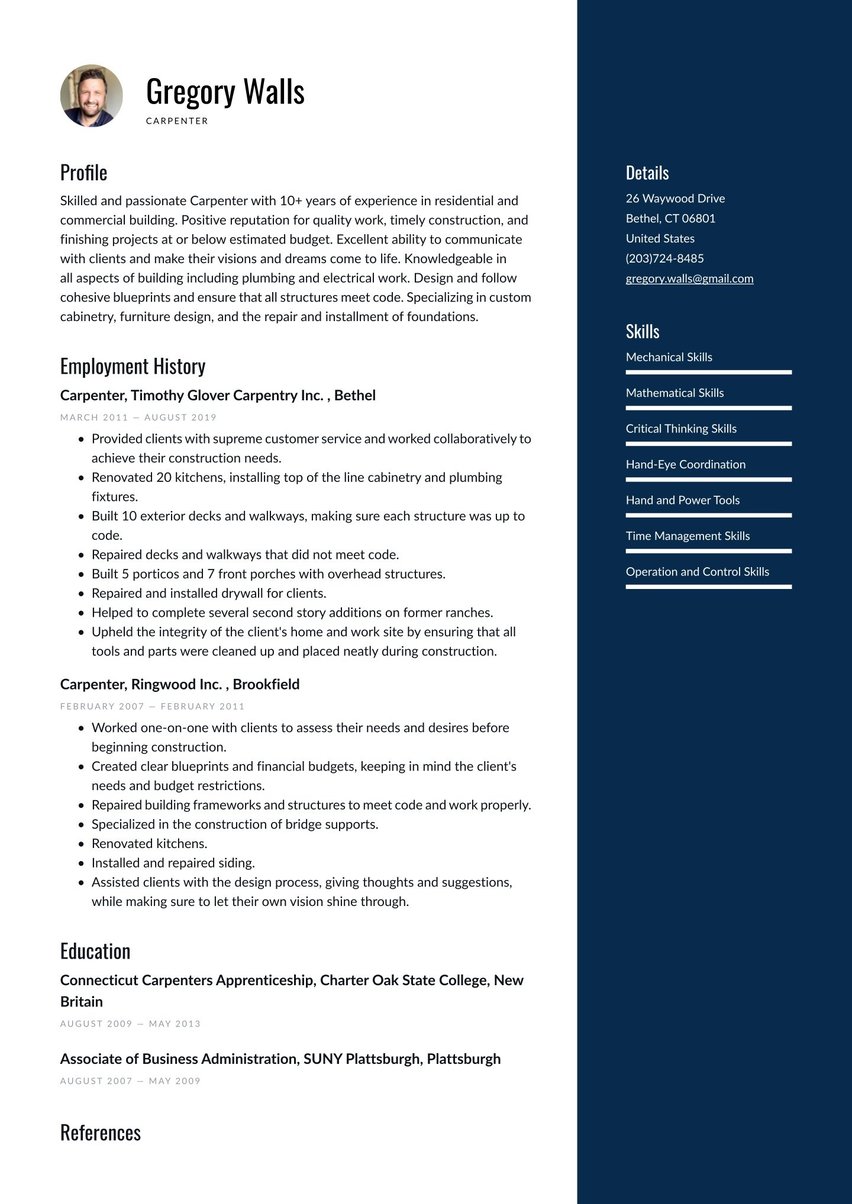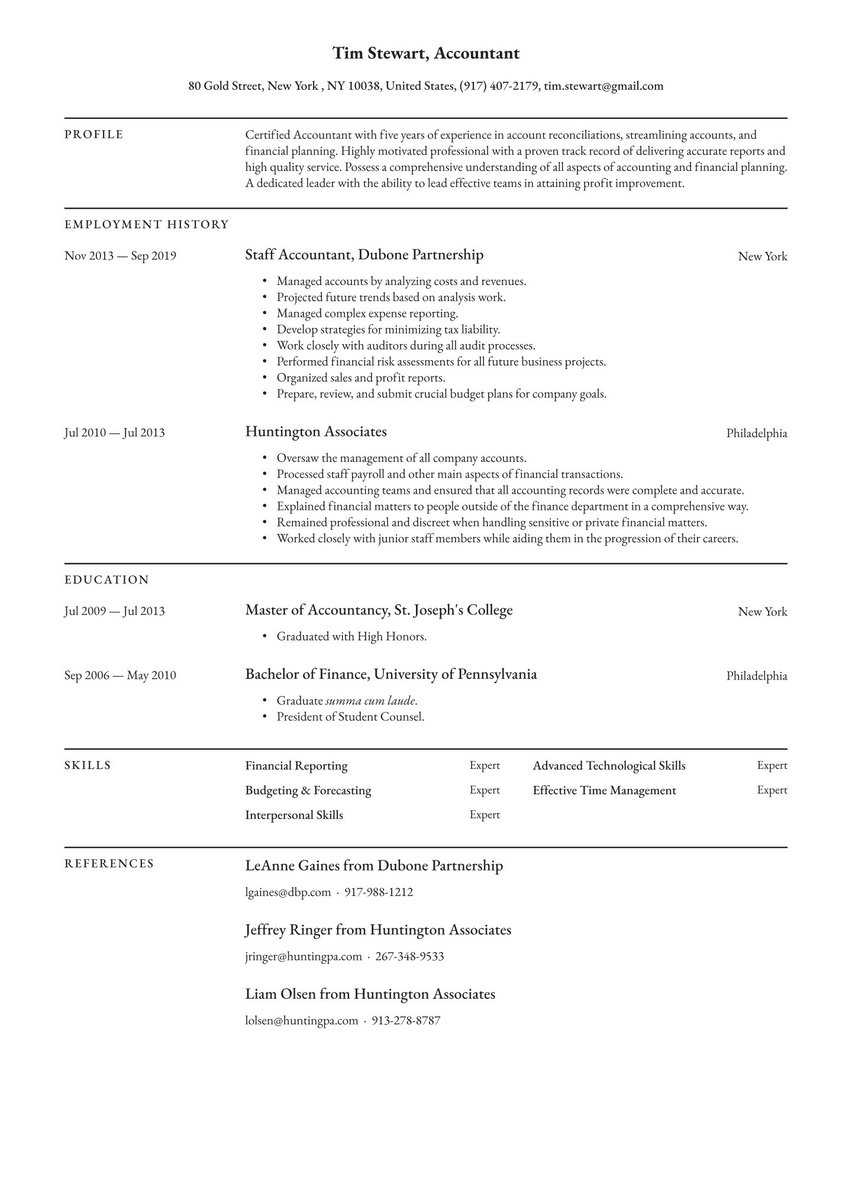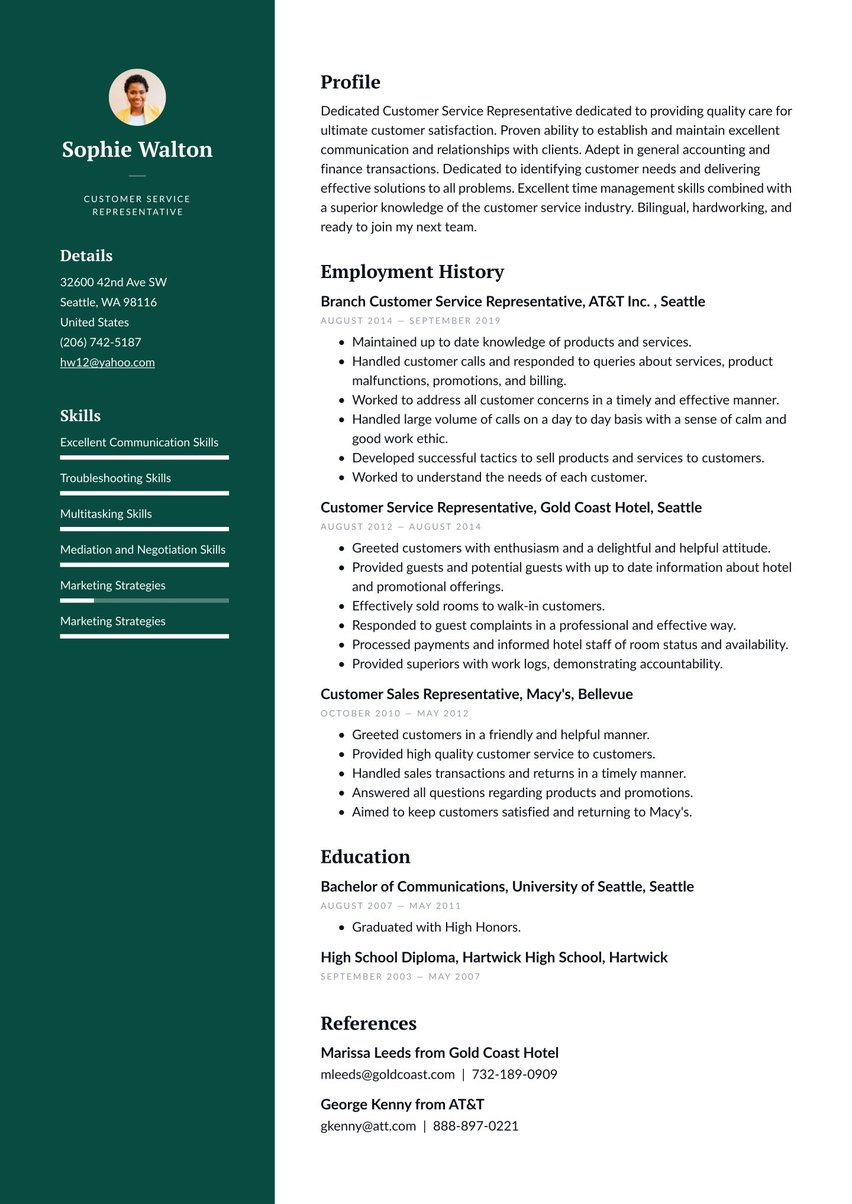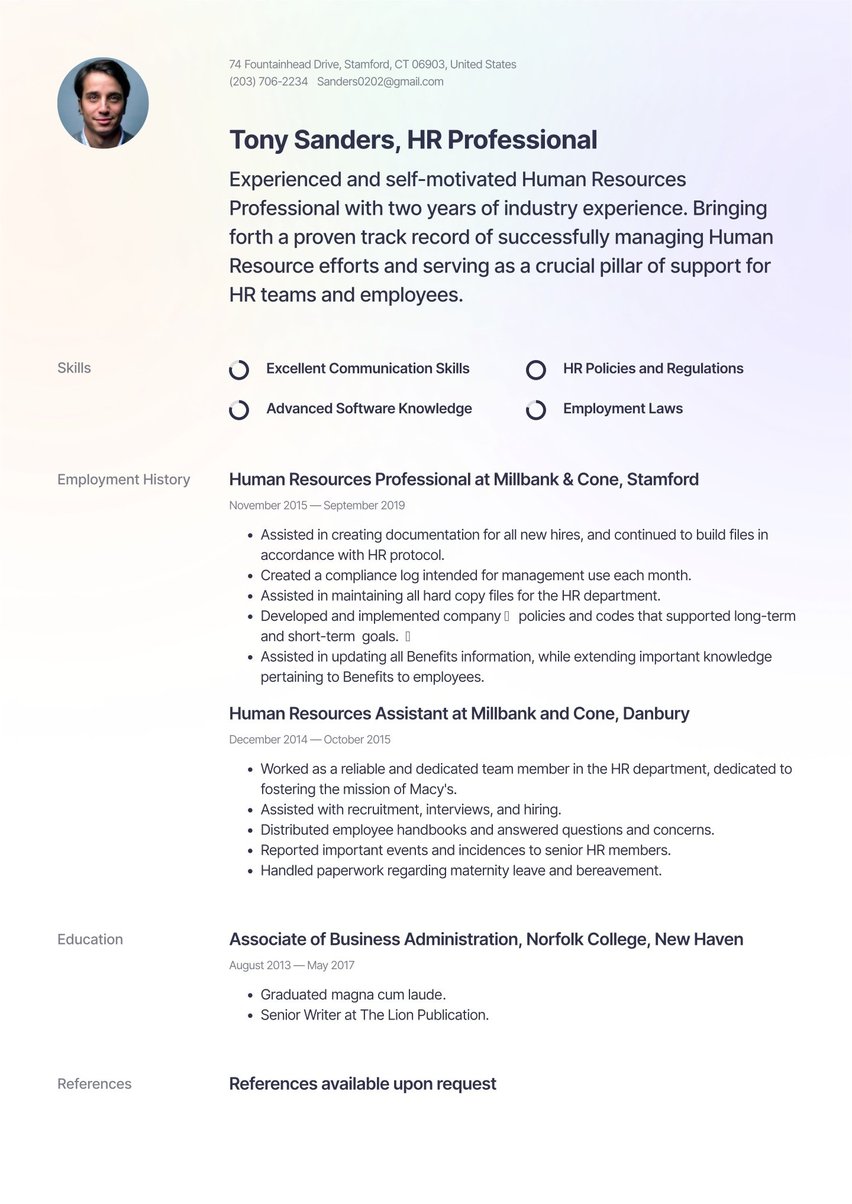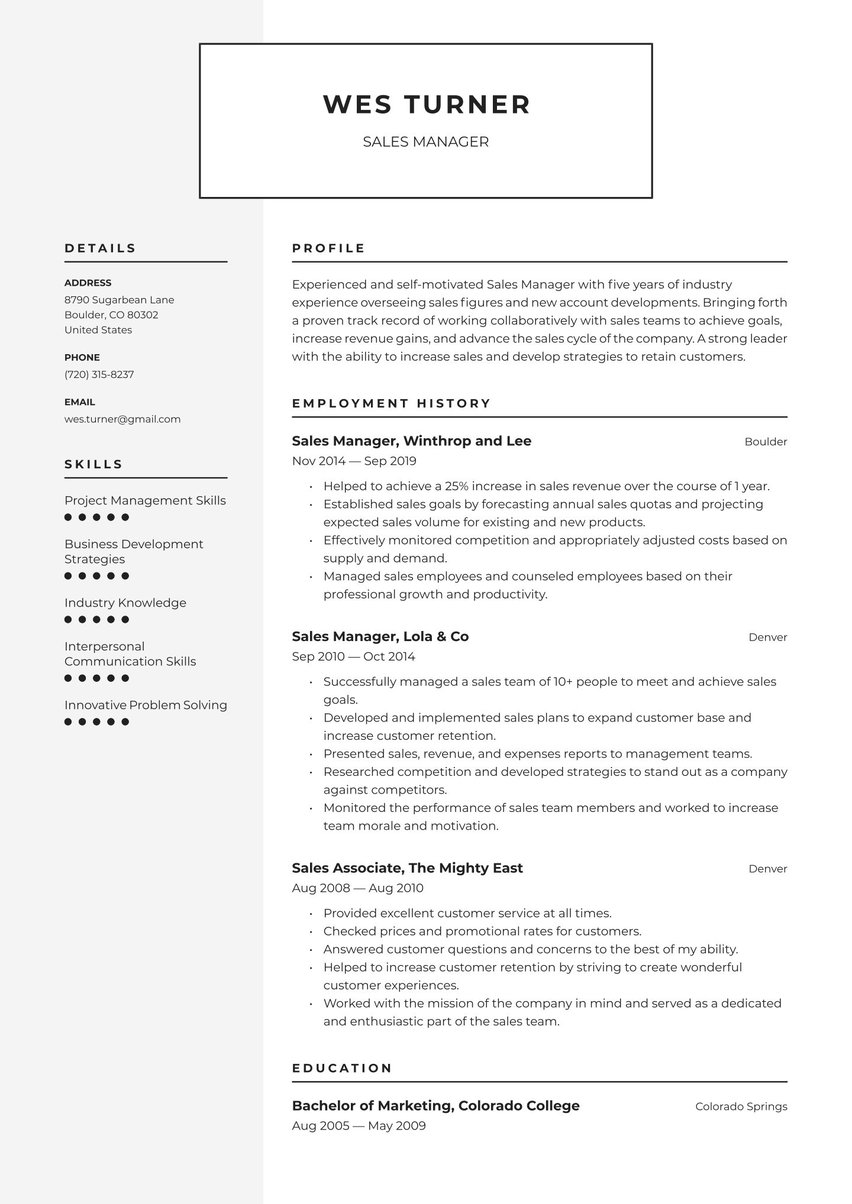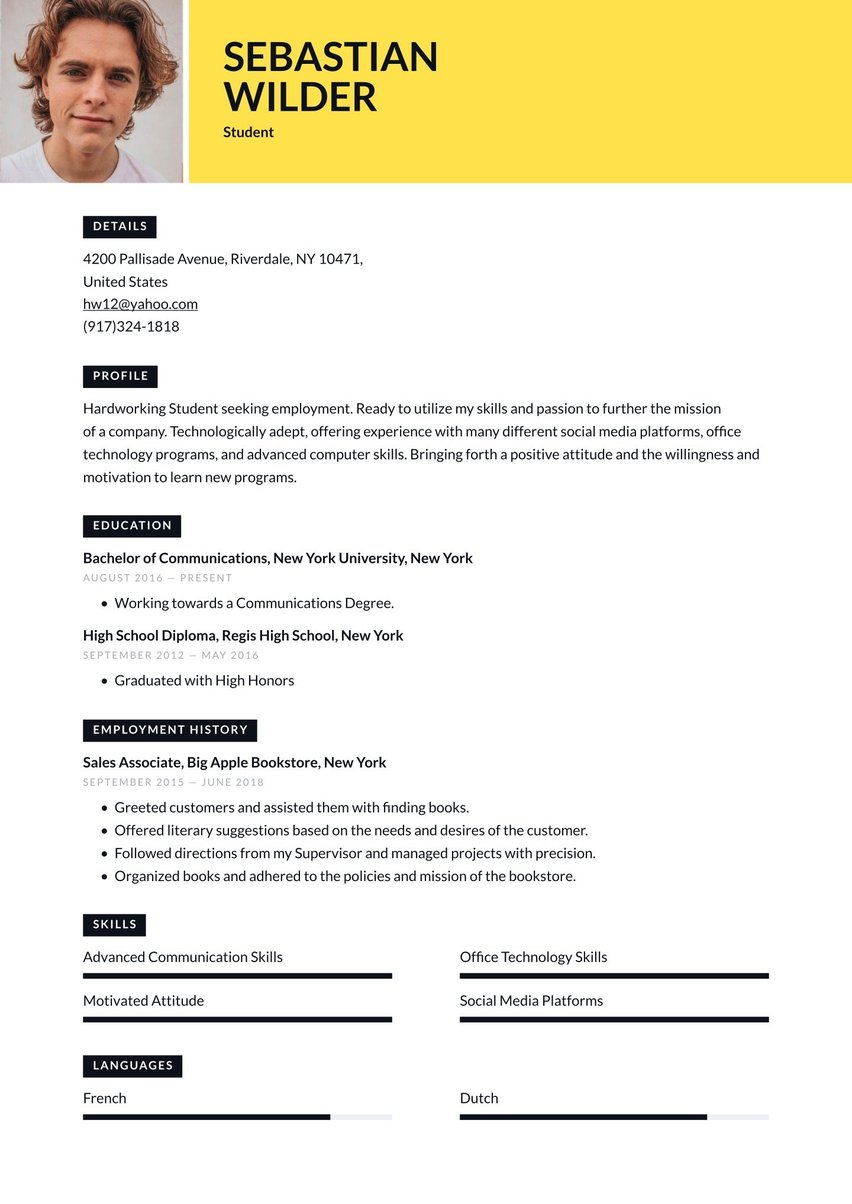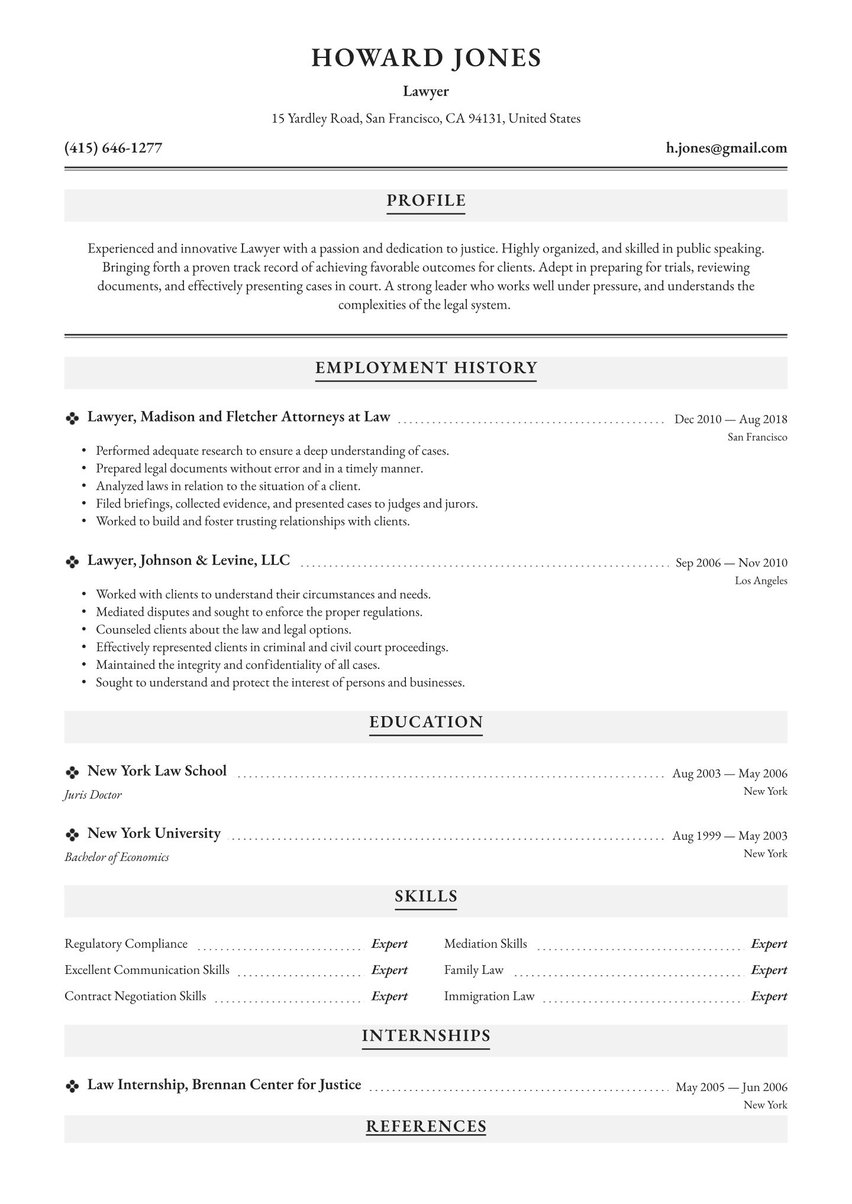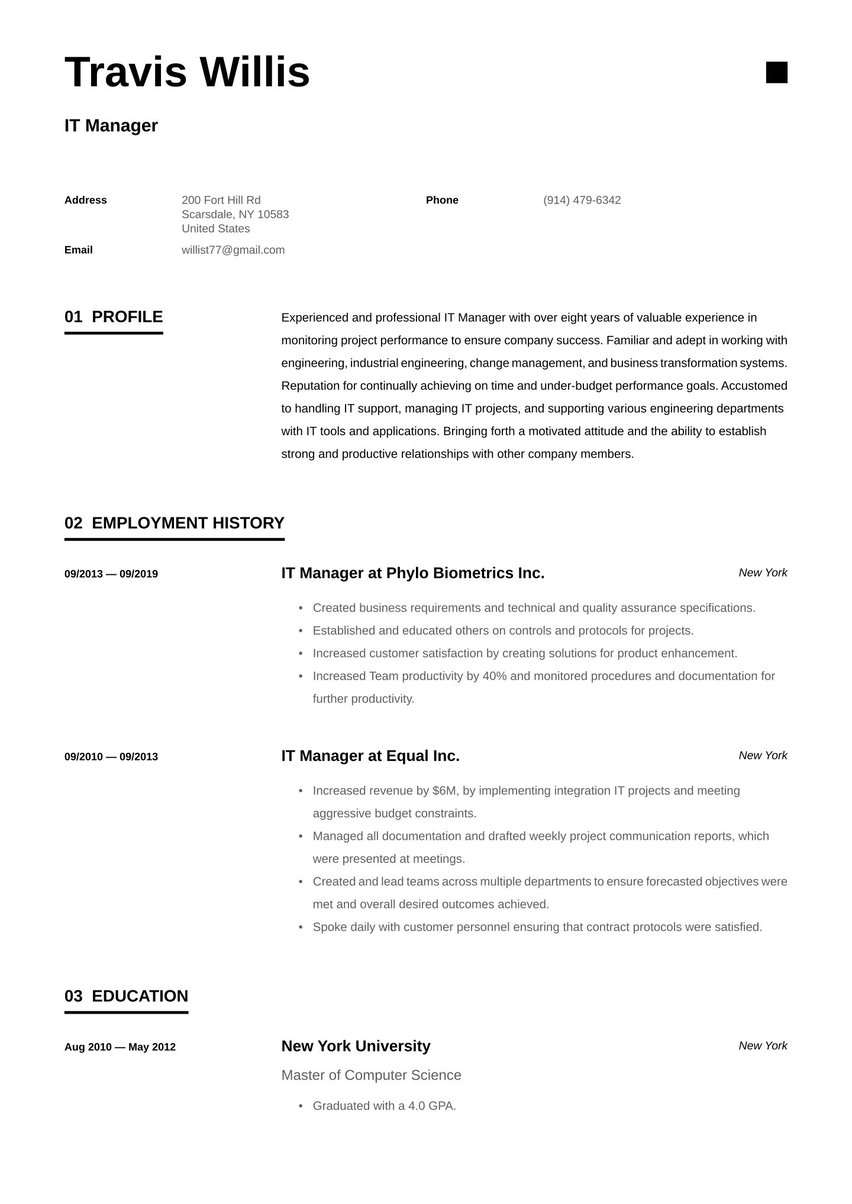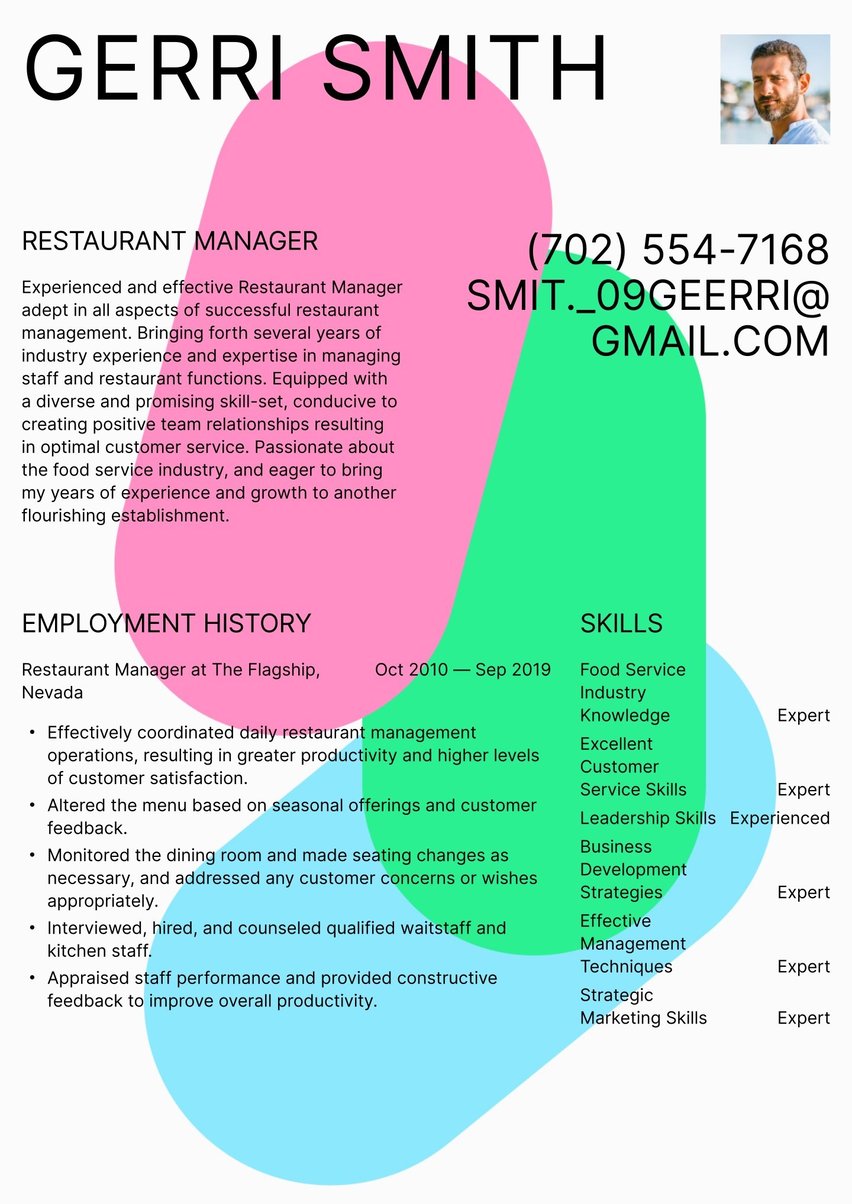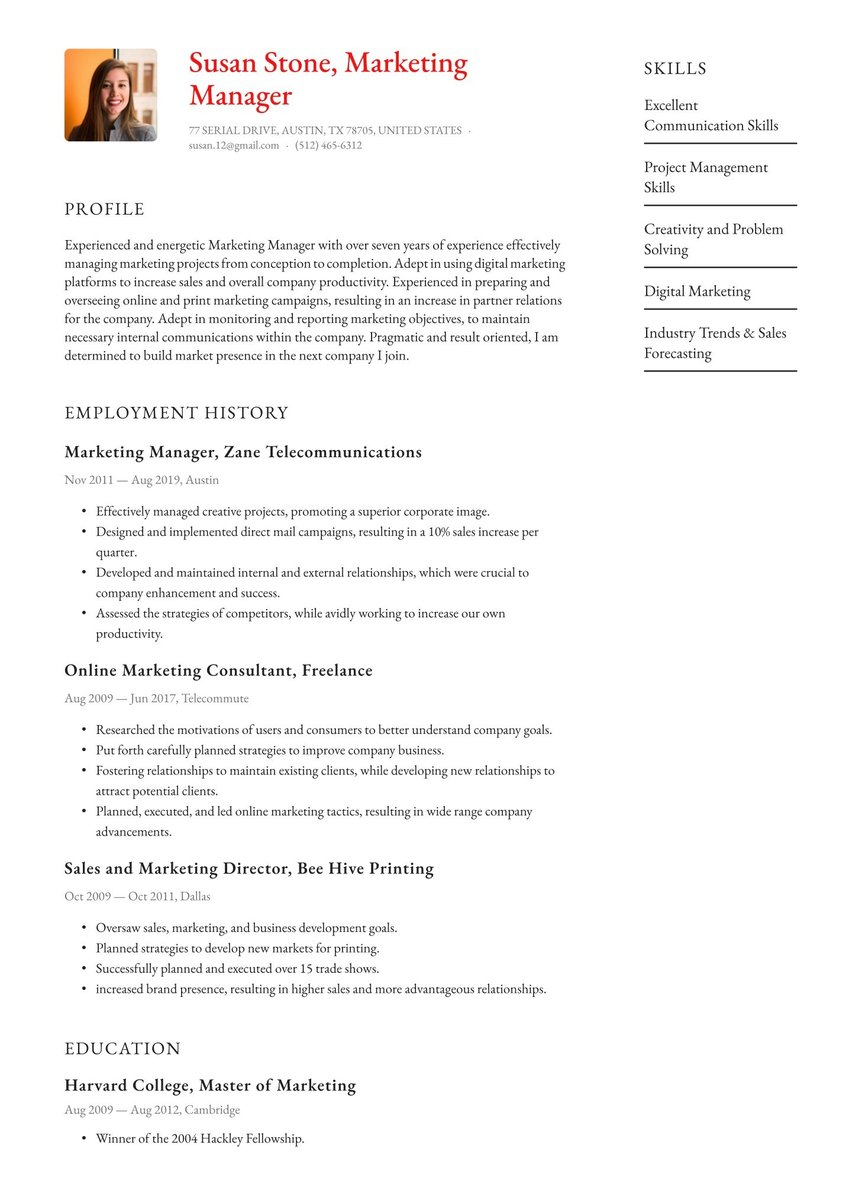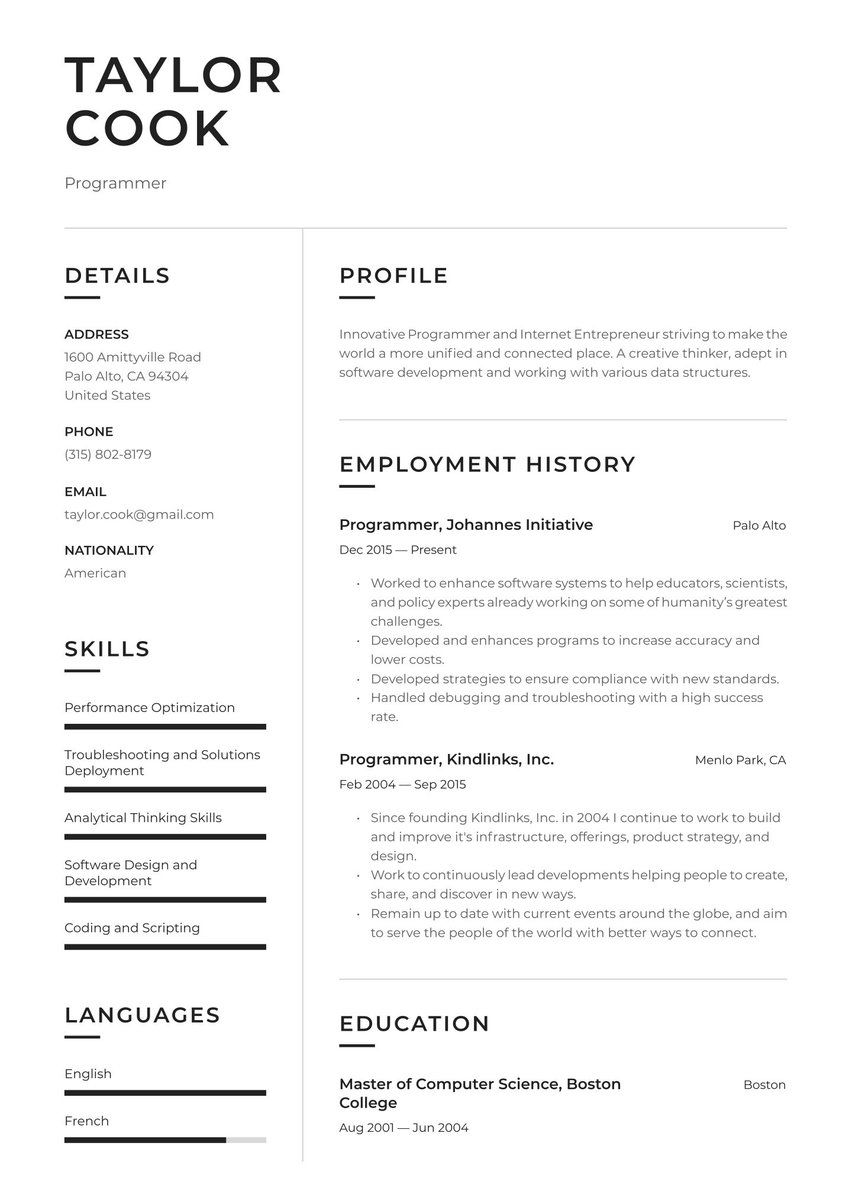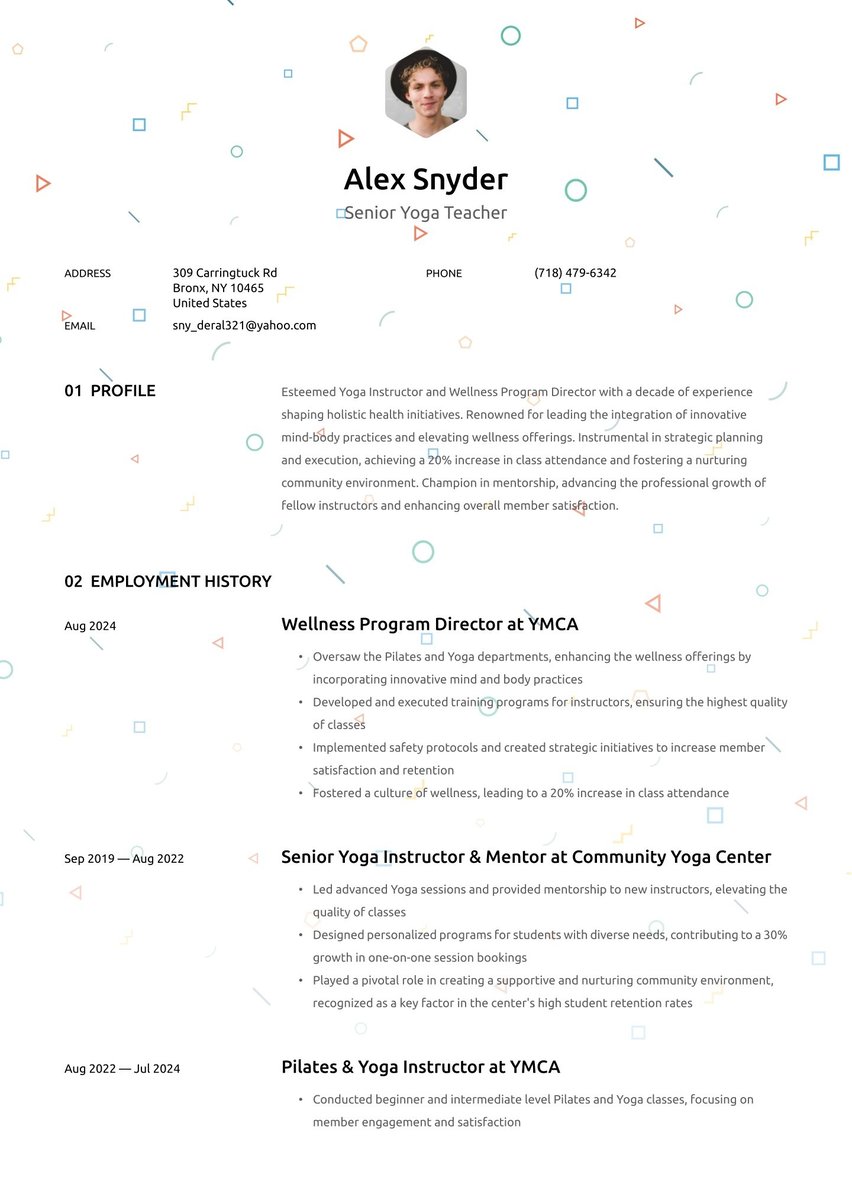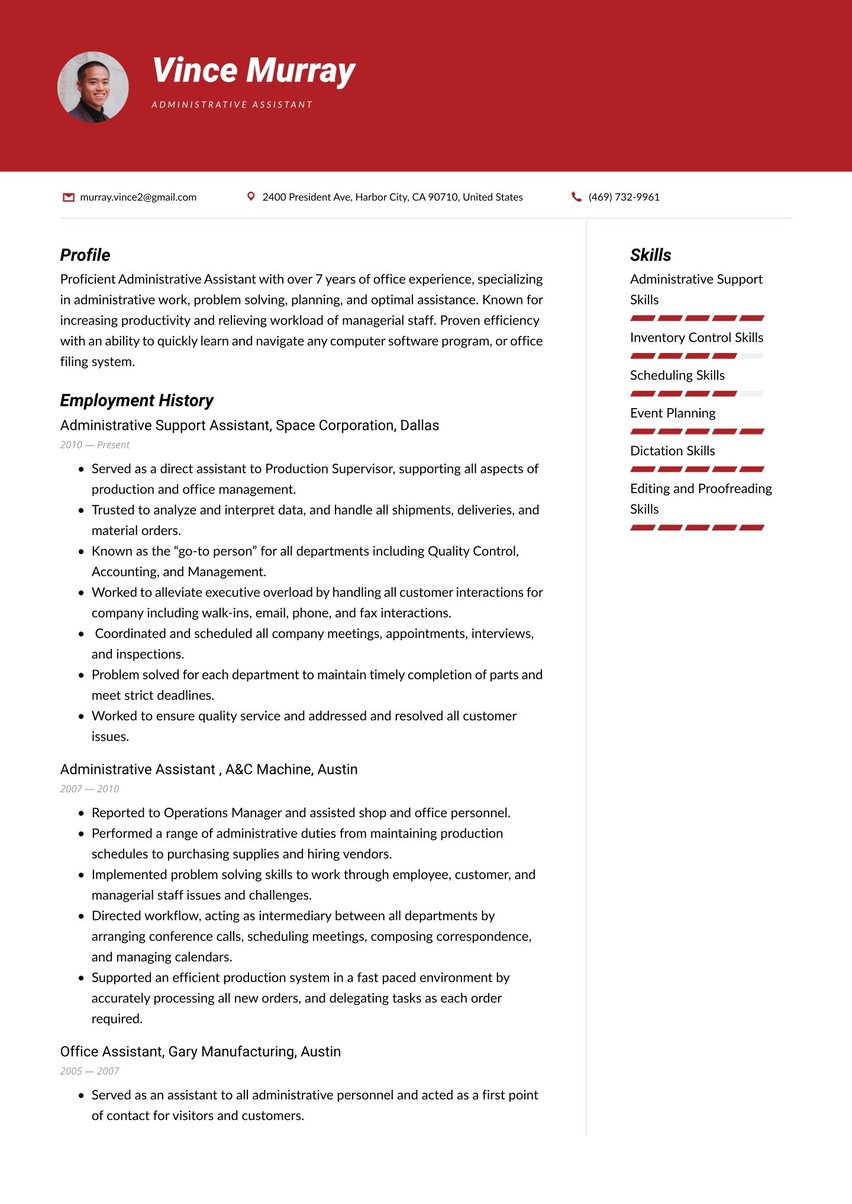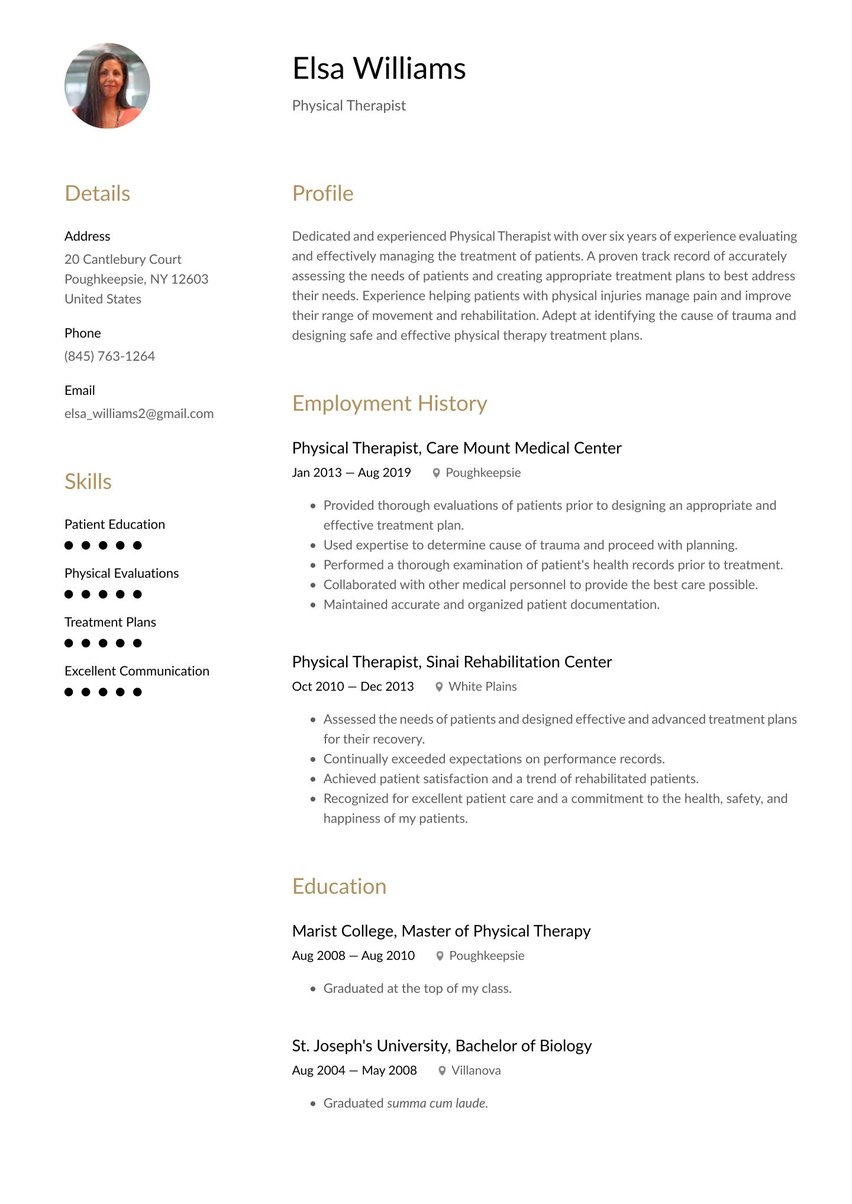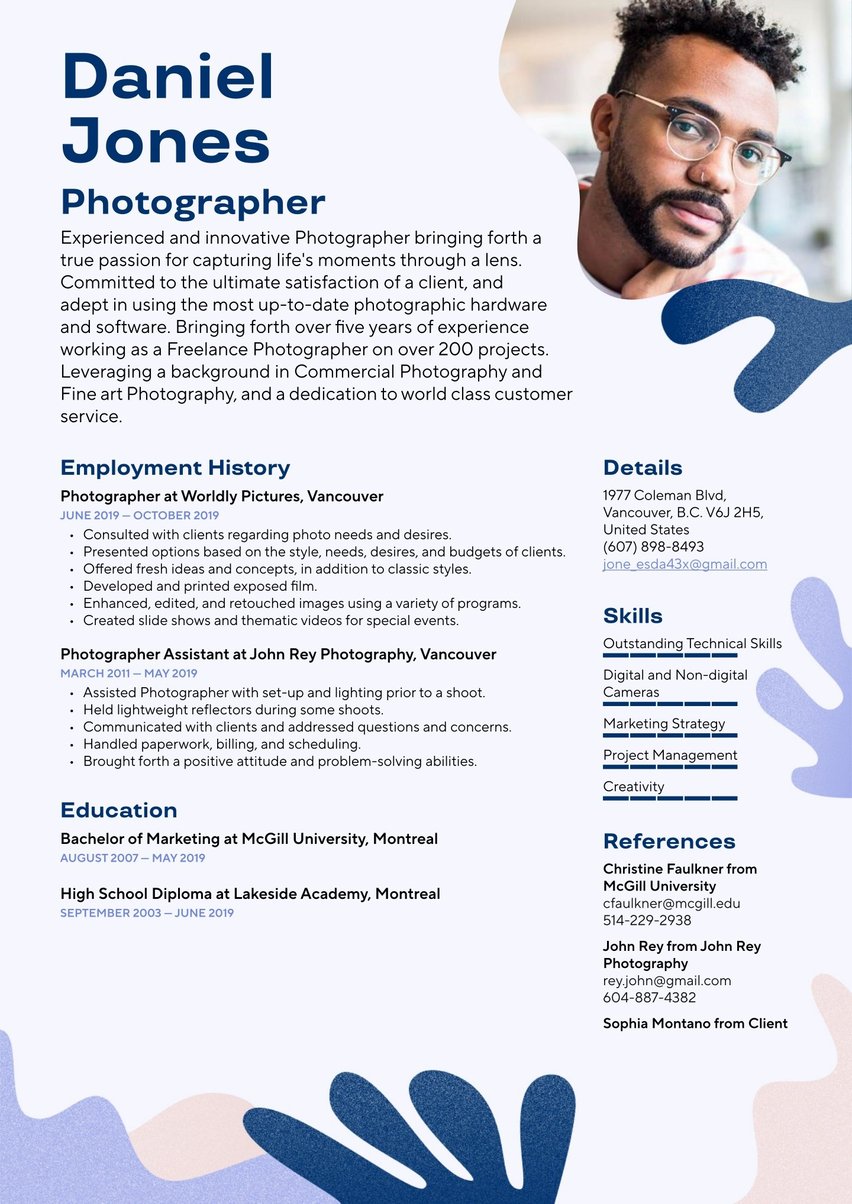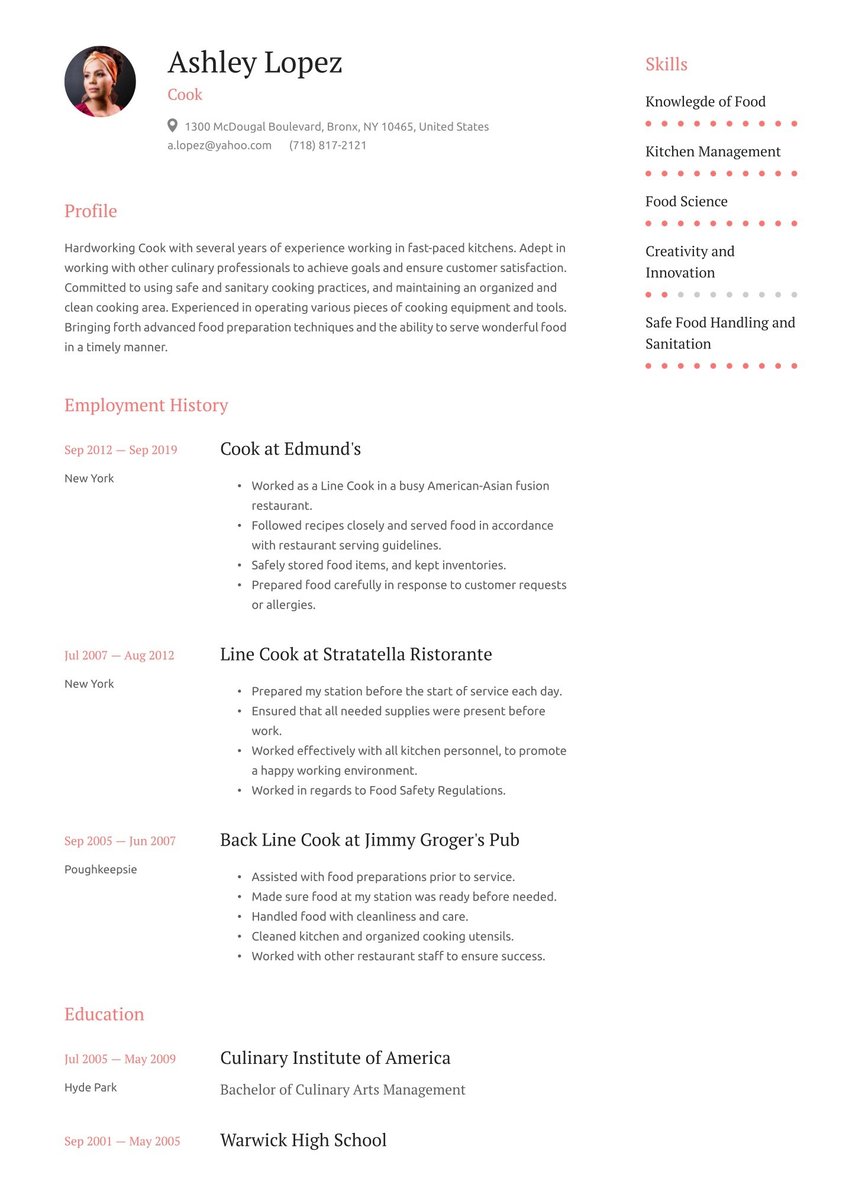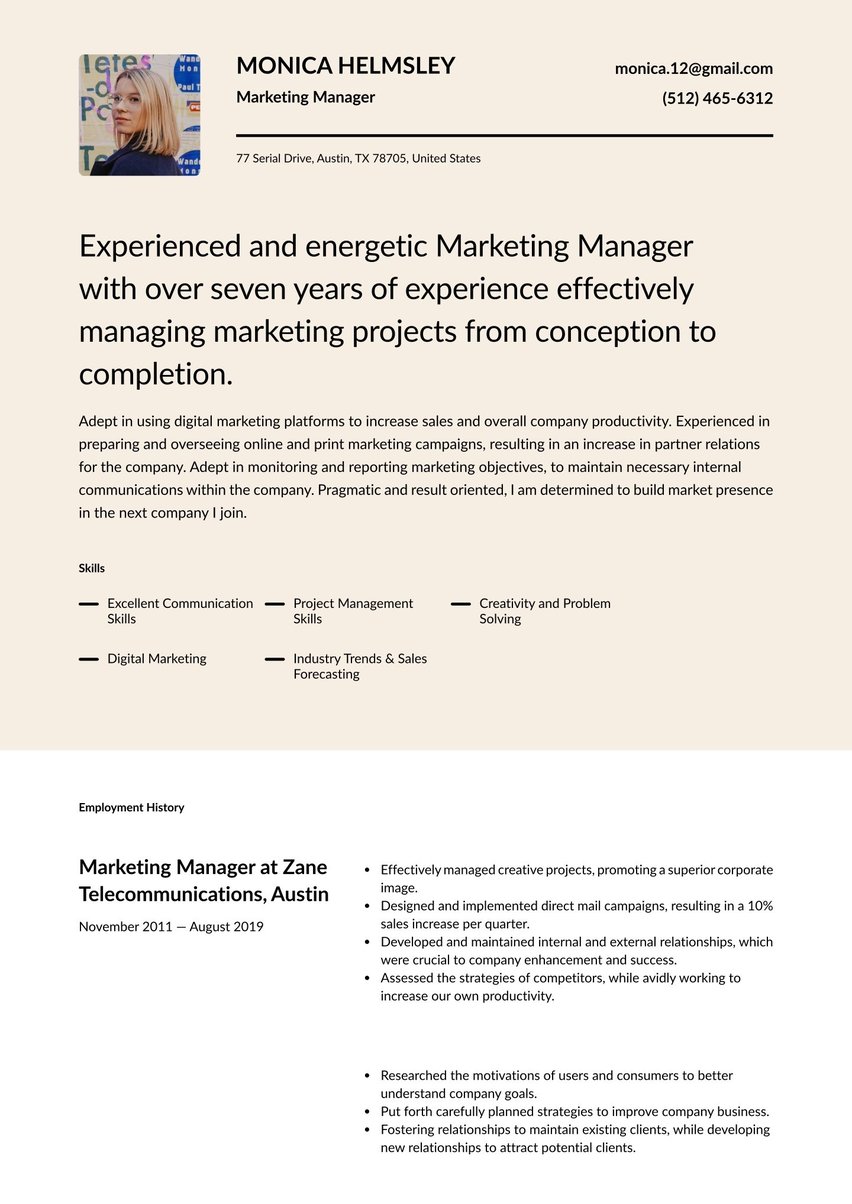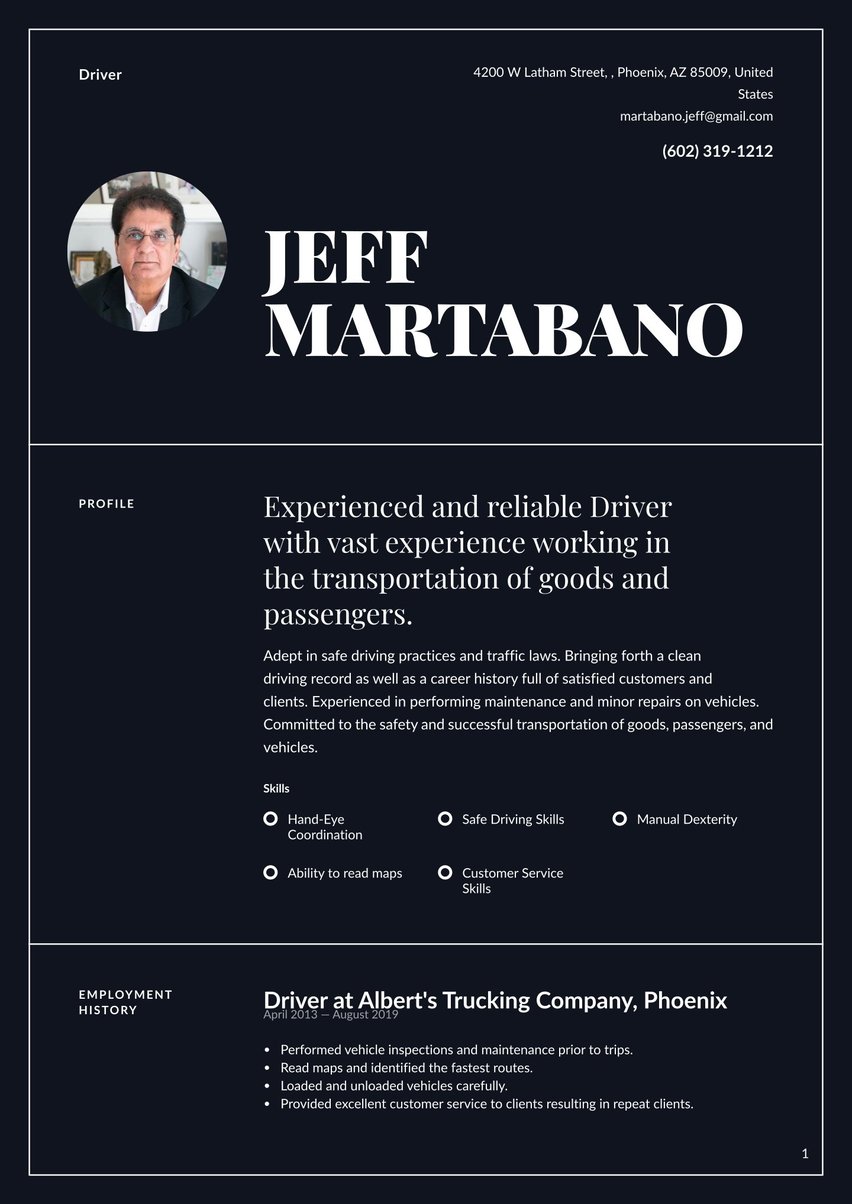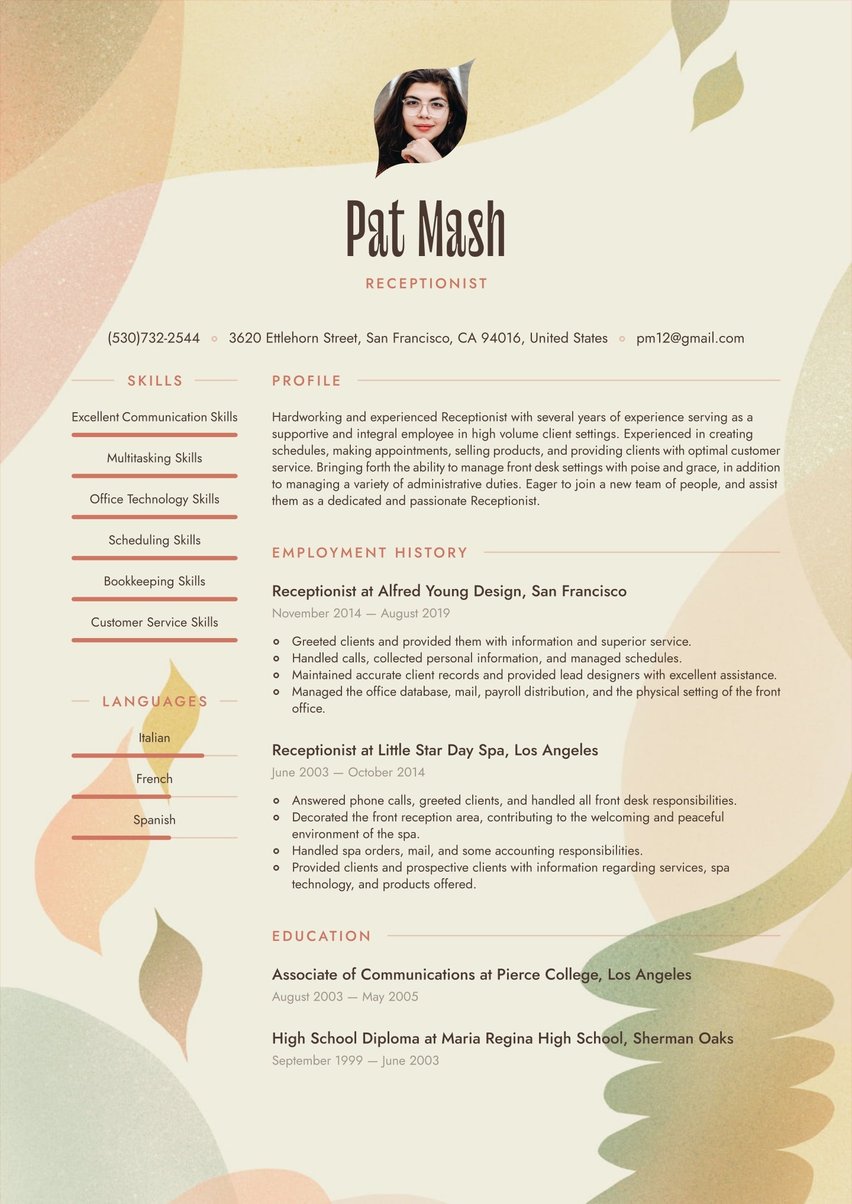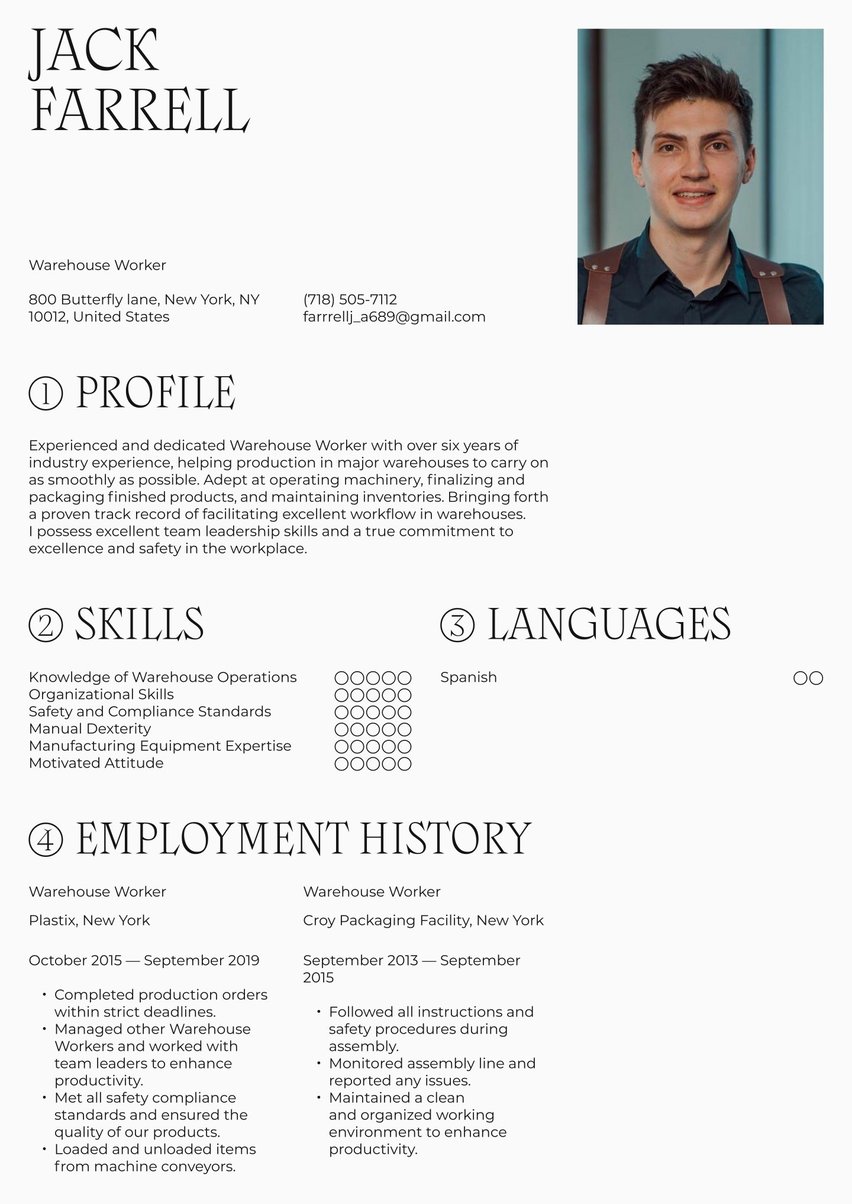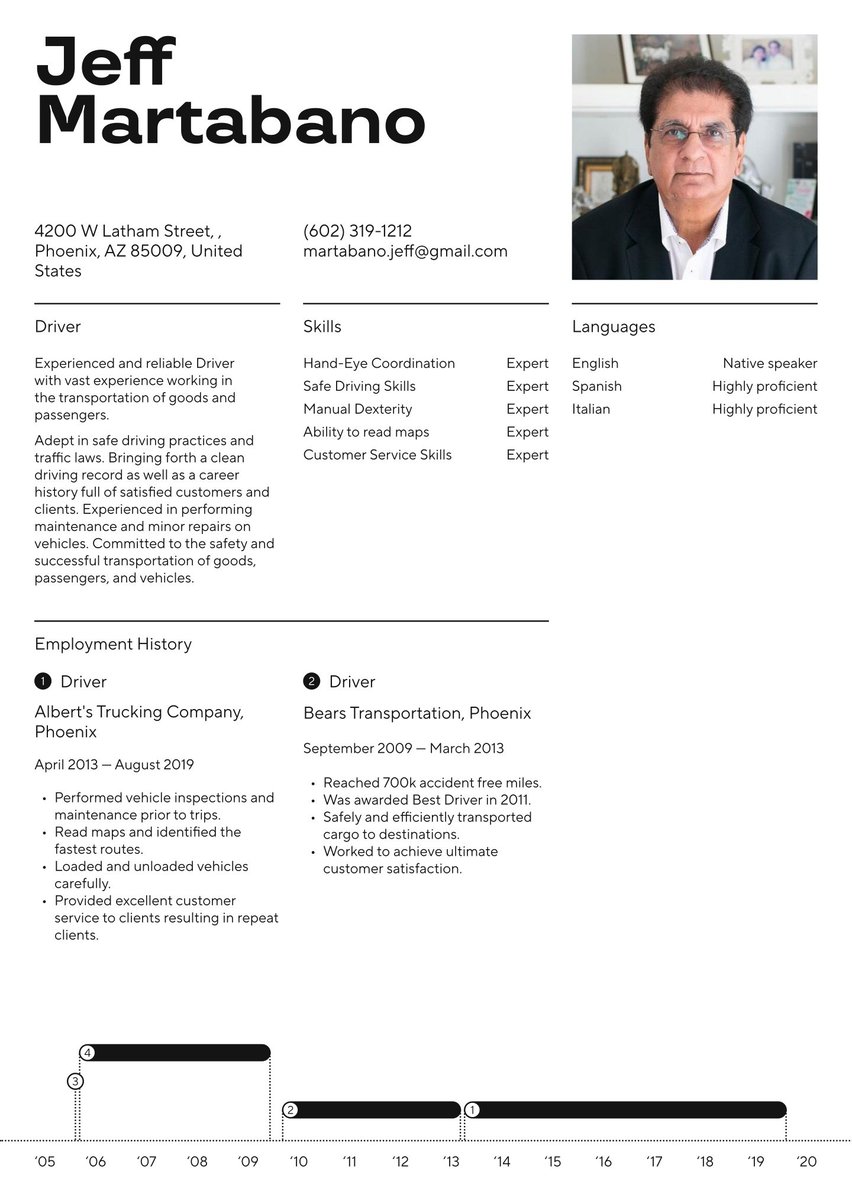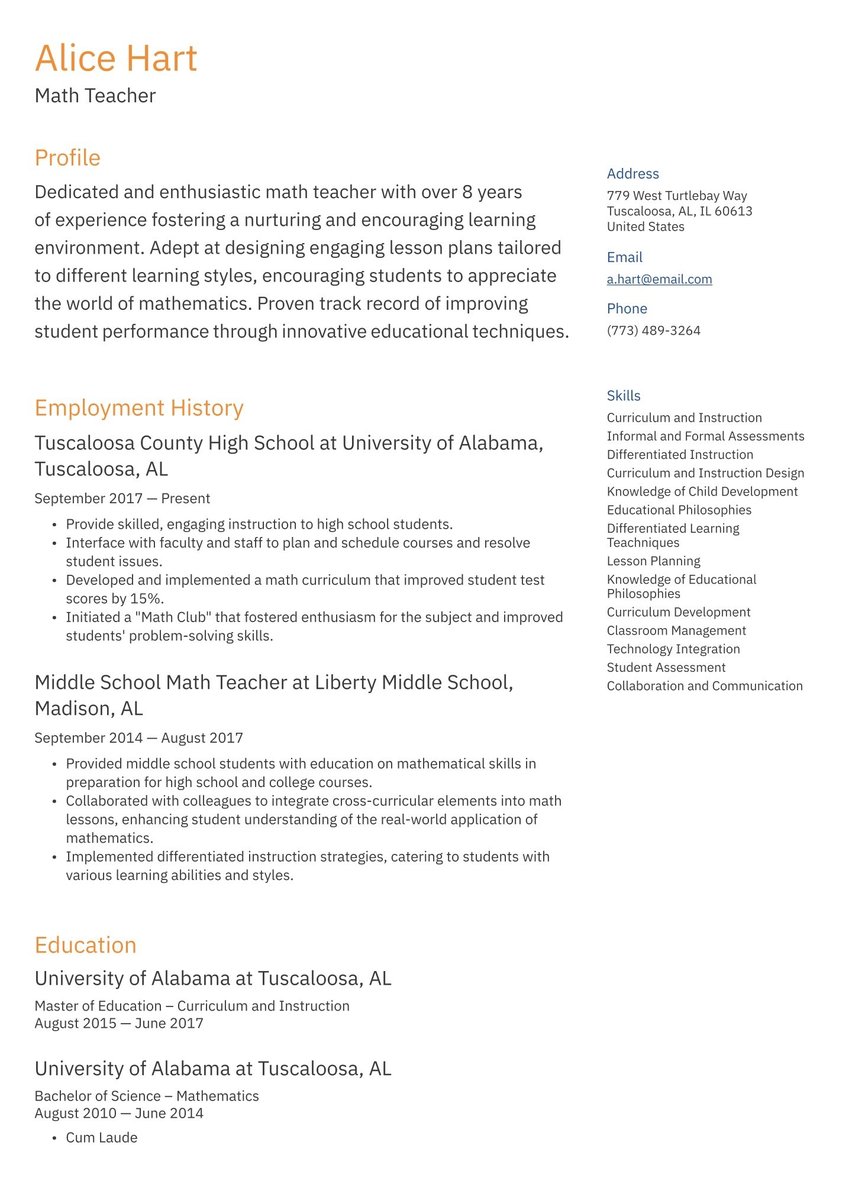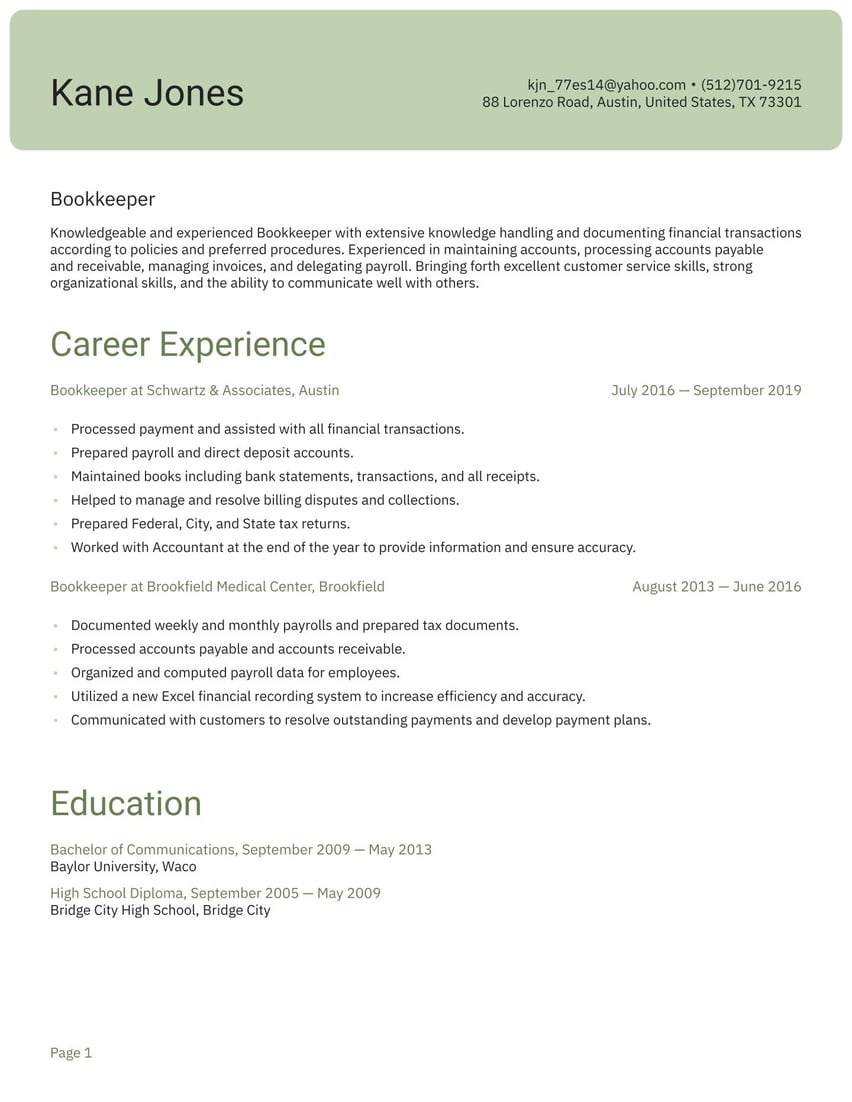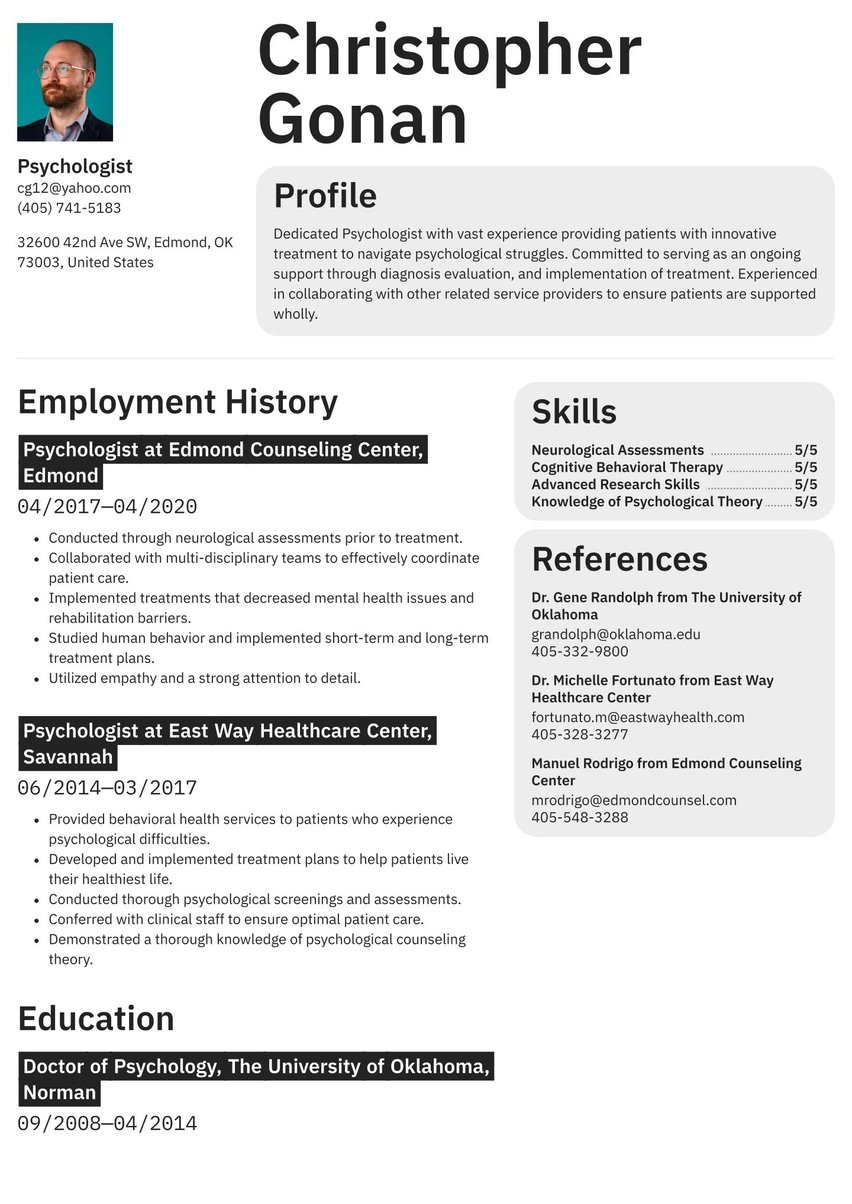Carpenters are masters of woodworking, aiding in the creation of everything from furniture to houses. But before getting to work, they need to prove their skills and training through a thoughtful and thorough carpenter resume.
You’re in the right place for advice on resume craftsmanship. Resume.io’s job search resources include more than 350 occupation-specific resume examples and writing guides. All are designed to help you create a winning job application that stands out and advances your career.
This writing guide, combined with our adaptable carpenter resume sample, is designed to help you catch a project manager or foreman's eye and land your next job in carpentry. Here's what we’ll cover:
- What does a carpenter do?
- How to write a great carpenter resume that passes automated resume scanners, starting with the correct framework and most suitable format
- Optimizing the impact of each section in your carpenter resume: header, summary, employment history, skills, and education
- Tips for a visually impressive resume document
What does a carpenter do?
Carpenters build and repair wooden objects used for buildings, furniture, and other structures. Carpenters create plans and designs for projects and consult with clients about costs, budget, and desired outcome.
Carpenters may also install cabinets, siding, and drywall when necessary. They often construct and repair building frameworks and structures, such as stairways, door frames, partitions, rafters, and bridge supports.
A carpenter should be adept in working with hand and power tools. They should be skilled at following blueprints and building plans, working to meet the needs of clients. At the forefront of their responsibilities lies the duty of making sure that safety guidelines are met and structures meet and cooperate with building codes and restrictions.
Carpenters should be skilled in measuring, cutting, and shaping wood and other materials. They should be adept at inspecting and assessing buildings and frameworks, and properly replacing damaged structures.
An ideal candidate holds a high school diploma or equivalent diploma and has completed an apprenticeship with technical training involved.
As a carpenter, your job prospects are relatively limited. The U.S. Bureau of Labor Statistics projects little or no change in employment growth — just 1% — from 2022 to 2032. For the construction sector overall, prospects are slightly better with 4% job growth anticipated, on par with the occupational average.
If you’re having trouble finding ideas and inspiration for your carpenter resume, review our other related resume examples in the maintenance & repair category:
- Maintenance technician resume sample
- Plumber resume sample
- Electrician resume sample
- Mechanic resume sample
- Cement mason resume sample
- Housekeeping resume sample
- Maintenance worker resume sample
- Janitor resume sample
- Handyman resume sample
- Painter resume sample
- Maintenance & repair resume sample
- HVAC technician resume sample
- Facilities manager resume sample
How to write a carpenter resume
A carpenter resume will need to show off your skills and experience to convince the hiring manager that you know how to get their projects done. But that doesn't mean you should focus entirely on technical skills. Carpenters must also possess strong communication skills, as part of their job often involves directing other laborers or assistants. The ideal candidate is skilled and passionate about creating pleasing final products. A winning carpenter resume example should highlight superior mechanical and mathematical skills, as well as a strong understanding of safety standards.
A great carpenter resume sample is made up of the common sections hiring managers expect to see when evaluating applications. These sections include:
- The resume header
- The resume summary (aka profile or personal statement)
- The employment history section
- The resume skills section
- The education section
The following chapters of this carpenter resume writing guide will offer tips on how to write each of these sections, plus adaptable sample wording.
Unless you hand your resume directly to a hiring manager or foreman, you can almost guarantee some sort of automated system will process it before it ever reaches human eyes. That's because most of today's medium to large companies, use applicant tracking systems (ATS) to filter and sort resumes before passing along only the top-ranking candidates to the hiring manager. Luckily, the power to beat these resume scanners is in your hands. Here are our top tips:
- Carefully read the job description and look for potential keywords: skills or duties that the company places particular emphasis on.
- Incorporate those keywords naturally and with the same wording from the job description into the appropriate resume sections.
- Choose a clean and organized resume layout that will allow the ATS to quickly find the keywords it's looking for.
Never try to cheat the ATS by stuffing your resume with keywords or lying about your experience. You might fool the robots but you'll likely ruin any chance of impressing the hiring manager.
Choosing the best resume format for a carpenter
Carpentry is a profession based on both professional experience and skills. Unlike many other professionals, you actually have a choice when it comes to creating the best resume format for a carpenter.
If you have worked in many different positions in the field, you may opt for the traditional reverse chronological resume format. For this format, you start with your most recent job title and place of employment and work backwards until you've included all relevant experience.
If you are just starting out in the field of carpentry or are self employed with many client projects to show, you might want to try a functional or hybrid (combination) resume format. This option allows you to highlight select skills towards the top of your resume and include a shorter experience section below. A combination format is an especially great choice if you offer specialized services or you're applying to work on a one-off project instead full time with a company.
Resume header
Don’t overlook the importance of this visual resume detail, designed to draw the reader’s attention right away to your name, occupation, phone and email address. Prominently displaying this identifying information makes it easy for hiring managers to contact you for an interview. A distinctive resume header design also sets your job application apart from all the rest, and makes everything else on the page look more inviting to read.
Resume summary example
While most of a carpentry resume will be focused on the facts of your experience and education, the summary is the one place where you can show off your professional personality and speak directly to the hiring manager. Briefly describe yourself and then highlight your biggest accomplishments and attributes. Remember to use as many powerful action verbs and job specific information as you can. And don't forget the people skills: carpenters must be able to please clients from start to finish by providing extraordinary service.
The summary — sometimes called profile or personal statement — is also the best place to mention any specific qualifications like licensing or apprenticeship experience that are required for the job. The summary should only be 3-5 sentences in length, so it's best to offer just a taste of your strengths and let the hiring manager read more later on.
Below is the summary from our carpenter resume example, which you can adapt for your own use.
Passionate and experienced Carpenter with an extensive background in residential and industrial work. Skilled at working with clients to provide seamless communication and high level services. Adept at creating blueprints and building plans based on client need and desires while working to ensure that all structures meet proper codes and regulations. Bringing forth leadership, dedication, and over seven years of experience working on residential, civil, and industrial projects. Proven track record of solving structural issues and creating pleasing final products for clients.
Employment history sample
Your employment history example is the place to list all of your work experience relevant to carpentry or positions that have allowed you to learn transferable skills. Remember to use powerful action verbs and mention job specific accomplishments that prove you are an excellent candidate. Look to the job description for insight into the company's priorities. Whenever possible, try to align your abilities with your potential employer's needs. Add weight to your accomplishments by offering numbers, facts and figures that demonstrate your impact.
The employment history section from our carpenter resume example can give you more insight.
- Communicated with clients to create blueprints and building plans according to need and desire.
- Trained and directed assistants and laborers to ensure the successful completion of projects.
- Constructed building frameworks including floors, walls, and door frames.
- Built and remodeled homes and town-homes in three new development complexes.
- Successfully collaborated with structural engineers during complex projects.
- Worked to ensure that all structures followed codes and regulations, and addressed structures built by other parties that failed to do so.
Carpenter education example
While your education section may not be as long as your experience, it's still an important feature on a carpenter resume. Make sure to list all degrees and certifications here, as well as any apprenticeships or continuing education. If you hold a degree higher than a bachelor's degree, you may leave out your high school.
Check out our carpenter resume sample to see the best formatting for your education section.
- 2004-2008 St. John’s College, Associate of Business Administration NY, NY
- 2008-2011 Professional Certificate of Carpentry NY, NY
CV skills example
The CV skills section is the place to offer a bullet-point list of any extremely important qualities that you want a hiring manager to notice right away. Look to the job description for clues about what an employer values most. The skills section is also the place to include technical abilities and other hard skills, like knowledge of software or building codes. Don't forget to throw in some soft skills, however. Hiring managers will appreciate that you are a well-rounded candidate who works well with others.
Check out our adaptable carpenter CV sample skills section below.
- Mathematical Skills
- Excellent Manual Dexterity
- Hand and Power Tools
- Strategic Planning
- Detail Oriented
Resume layout and design
Creating a professional presentation for your carpenter resume example is one of the best things you can do to increase your chances of standing out. Good design doesn't have to be complicated, however. Check out our collection of resume templates for an easy-to-use format that corresponds well to trade work like carpentry — perhaps from the simple style category. You can also add a splash of color or other design elements if you feel your prospective employer will appreciate it. When in doubt, a clean, easy to read layout is the best choice to make an impact while focusing attention on your experience.
Check out our carpenter resume sample for professional formatting and design ideas.
- Keep a balance of white space to text on your resume layout
- Create a visually attractive header to draw attention to your name and contact information
- Choose a simple template with clean lines and a neutral color palette
Key takeaways
- A resume is an important tool to showcase your professional experience and education when applying for a carpentry position.
- Carpenters can choose between traditional chronological resume formats or more flexible combination formats depending on the purpose of their application.
- Your header is the one place to show off some personality on your carpentry resume sample — use it to offer a taste of your best qualities.
- Use action verbs and concrete numbers and statistics to prove your worth in your employment history section.
- Don't underestimate the importance of great visuals! Even a simple resume template can help make your application stand out.


.jpg)

.jpg)
